What Are the Best Mulches for Hydrangeas? 5 Great Options
-

- Last updated:
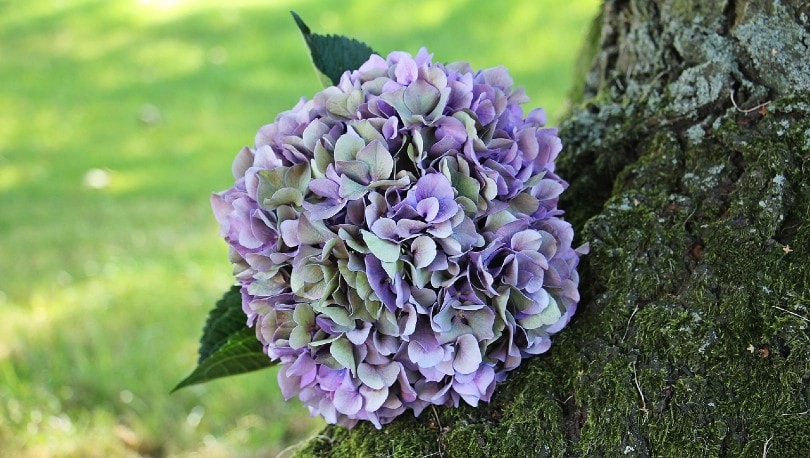
Hydrangeas are relatively easy-to-grow plants that will produce large, showy flowers as long as you give them plenty of sunlight and well-drained soil. That said, mulch can add nutrients, protect the roots, and regulate soil temperature. But with so many options out there, it can be difficult to choose the best kind of mulch for your plant. Keep reading as we list several of the top choices for hydrangeas to help them stay healthy.

The 5 Mulches Great for Hydrangeas
1. Chopped Leaves
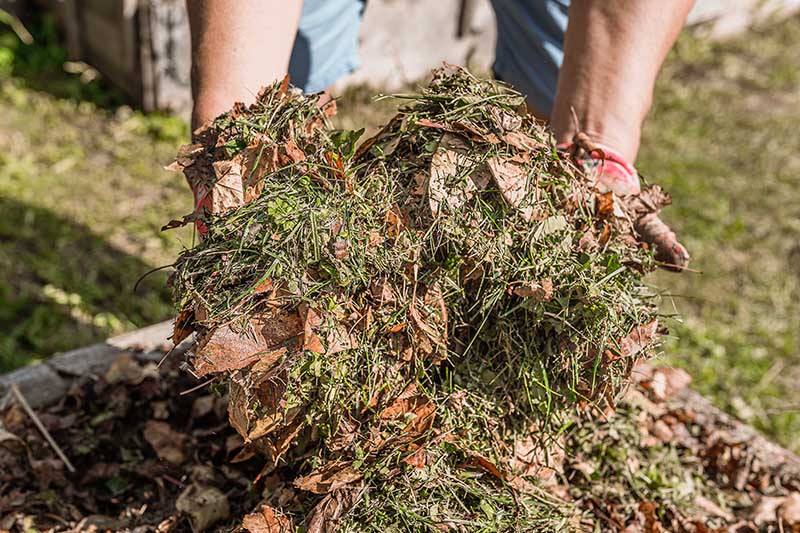
| Benefits: | Easy to obtain, provides nutrients |
Chopped leaf mulch is one of the easiest mulches that you can use for your hydrangea, and it will help attract earthworms and other good insects that will nourish your plant and help the soil retain moisture. It’s a free option because you can usually find all the leaves that you need in your backyard.
The downside to chopped leaf mulch is that it doesn’t last long, so you will need to replace it each year. You will also need to shred the leaves to create the mulch manually.
- No cost
- Easy to find
- Attracts helpful insects
- Decomposes quickly
- Manual leaf shredding
2. Compost
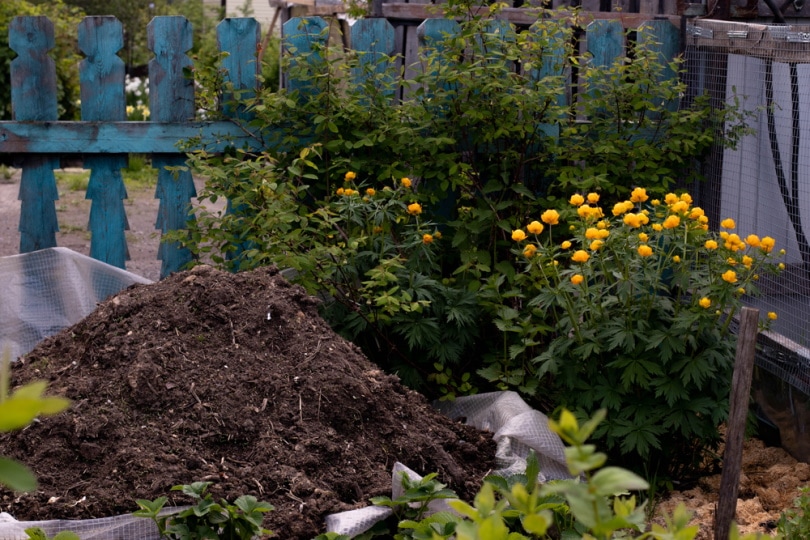
| Benefits: | Environmentally friendly, inexpensive |
Compost is a no-cost item that you can create yourself and use for your hydrangea. Compost also helps reduce your environmental footprint by enabling you to recycle food waste and other organic materials in your home to create nutrient-rich soil that will benefit your garden. It works much like chopped leaves to provide a dense cover over the soil that will help it retain moisture as it breaks down and adds nutrients.
The downside to using compost as a fertilizer is that it can attract animals and has a bad odor.
- No cost
- DIY
- Environmentally friendly
- Produces nutrient-rich soil
- Bad odor
- Might attract animals
3. Pine Straw
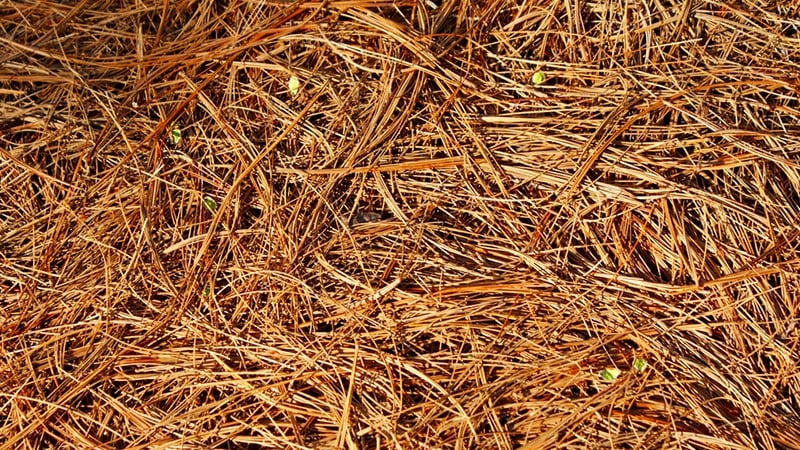
| Benefits: | Long-lasting |
Pine trees are abundant across the United States, and their needles make an excellent mulch for hydrangea plants. They produce a nice barrier that helps retain moisture and regulate the soil temperature. It also lasts longer than leaf or compost mulch, so you won’t need to replace it as often.
The downside to pine straw is that since it doesn’t break down as quickly, it won’t add as many nutrients to the soil. It can also attract harmful insects, including termites, that might damage your home, so it’s best to keep this kind of mulch several feet away from your home.
- Easy to find
- Long-lasting
- Regulates temperature
- Attracts harmful insects
- Doesn’t add that many nutrients to the soil
4. Pine Bark
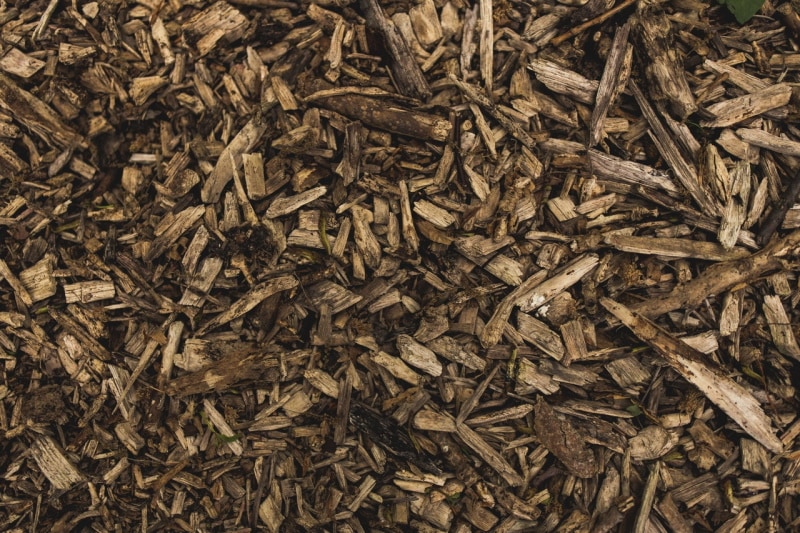
| Benefits: | Long lasting |
Pine bark is a wood chip mulch that works great around the hydrangea. It lasts a long time and can help prevent weeds. Pinewood is also slightly acidic and will drop the pH of your soil, which the hydrangea will enjoy. Although you will need to purchase this kind of mulch, it’s usually fairly inexpensive, and as it breaks down, it will add nutrients to the soil.
The downside to pine bark is that many wood chip mulches have chemical dyes, so when the color fades, the chemicals will get into the soil. The harder wood can also make it difficult for ground-dwelling bees to make nests, reducing the number of pollinators in the area.
- Long lasting
- Drops the pH of the soil
- Inexpensive
- Prevents weeds
- May contain chemical dyes
- May deter pollinating bees
Our Pine Bark Recommendation
5. Coconut Mulch
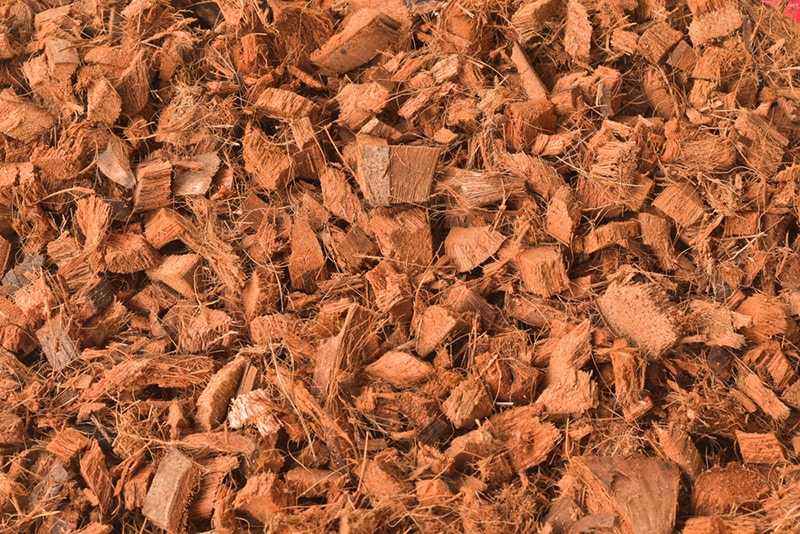
| Benefits: | Maintains moisture level, controls weeds |
Coconut mulch is a type of mulch that you will need to purchase commercially, but it works well. It helps produce well-draining soil that holds moisture and can help prevent weed growth for up to 3 years. It also adds nutrients to the soil as it breaks down. Manufacturing this kind of mulch is more environmentally friendly than many other types.
The downside to coconut mulch is that manufacturers soak certain kinds in saltwater, which might add salt to your soil. It’s also low in iron, magnesium, and calcium, so you may need to add supplemental fertilizers to your hydrangea plant.
- Maintains soil moisture level
- Controls weeds
- Long lasting
- Environmentally friendly
- Can add salt to the soil
- Low in some nutrients
Our Coconut Mulch Recommendation

Frequently Asked Questions
How Much Mulch Should I Put Around My Hydrangeas?
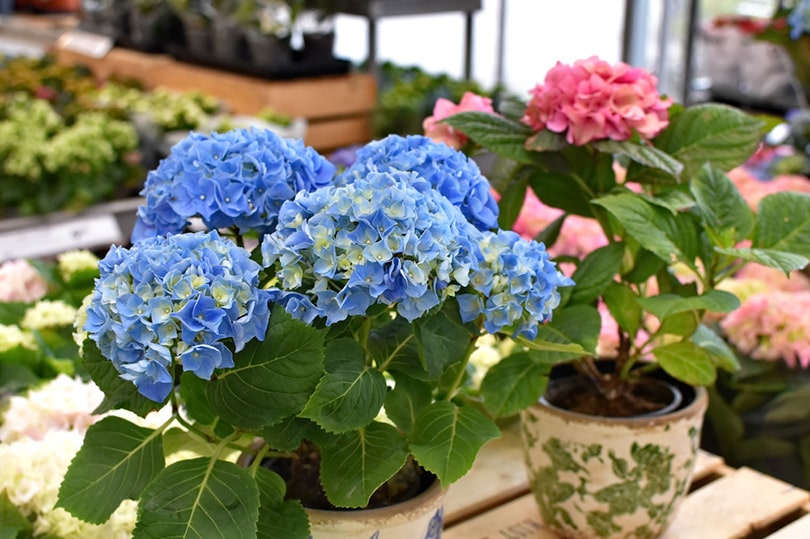
How thick the mulch is around your hydrangea plant depends on how fine it is and your climate. A fine mulch, like compost or leaf mulch, will usually be about ½ inch thick, while a coarse mulch, like wood chips, will often be more than 1 inch deep, though it’s not uncommon to see it as deep as 3 or 4 inches. You will also want to add more mulch if the climate gets very hot and dry or very cold. The extra mulch will help maintain a steady temperature and retain moisture as the weather fluctuates. A thick mulch can also help prevent weed growth.
Do I Put the Mulch Right Up to the Trunk of the Hydrangea?
No, most experts recommend leaving 2–3 inches of space between the stem or trunk of the hydrangea and your mulch. If the mulch is up against the stem, it might cause root rot.
When Do I Replace the Mulch?
The best time to replace the mulch around your hydrangea is in the spring, right before you start seeing a large amount of growth. Inspect your mulch carefully for quality and depth, and replace it as needed.

Conclusion
You can use many different mulches around your hydrangea to help it maintain moisture and regulate temperature. We recommend chopped leaves or pine straw if you want something inexpensive and readily available. If you are using poor-quality soil, compost can quickly add the nutrients that your hydrangea needs. Coconut mulch is a great choice for dry environments because it can retain moisture, and pine bark is ideal for reducing weeds and protecting the plant from extreme temperatures.
See Also:
Featured Image Credit: pixel2013, Pixabay
Contents
